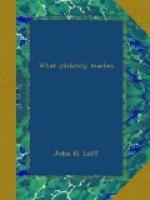[Illustration: Watermark, Crown with letters CA]
[Illustration: Watermarks, Cross and Orb, Anchor, Elephant Head, Pine-Apple, Castle]
[Illustration: Water Marks, Post Horn, Turtle, Geneva Cross]
Here are some well-known watermarks. The letters CC under the Crown stand for “Crown Colonies.” This was extensively used on stamps of the British Colonies. It has been replaced by a similar design, lettered CA, “Crown Agents for the Colonies,” which is still in use. A great variety of crowns have been used, as also of stars. The cross and orb are found on stamps of Great Britain. The anchor belongs to the Cape of Good Hope, the elephant to India, the pine-apple to Jamaica, the castle to Spain (where else would we have castles if not in Spain?) the post horn to Denmark, the turtle to Tonga. The Geneva cross belongs to Switzerland but is not really a watermark, as it is impressed in the paper after the stamps are printed. The pyramid and sun and the star and crescent both belong to Egypt. The lion comes from Norway, the sun from the Argentine Republic, the wreath of oak leaves from Hanover, the lotus flower from Siam.
[Illustration: US. POD ’99]
[Illustration: Double eagle]
[Illustration: Watermark, Pyramid, Moon and Star]
[Illustration: Watermark, Lion with Axe, Sun, Wreath, Flower]
Here is one from Travancore, it represents a shell sacred to the god Vishnu. On the stamps of Shanghai we find these Chinese characters. They read Kung Pu, literally labor board, otherwise Municipal Council, by whose authority the stamps were issued.
[Illustration: Watermark, Shell]
[Illustration: Watermark, Chinese Characters]
The watermarks on the preceding page are from envelopes of the United States and Russia. Of course there are many more watermarks than those we show. On many sheets there are watermarked borders with the name of the country, the word “postage,” or other inscriptions.
There is much that is interesting in paper making. The best paper is made from linen rags but many other substances are used, cotton rags, esparto grass, straw, etc. Very common paper, such as that used for the daily newspapers, is made from wood pulp. Paper is made in two ways, by hand and by machinery.
Hand made paper is made by means of a mould and a deckle. A mould is a piece of fine wire gauze, tightly stretched on a wooden frame. If the paper is to be laid, coarser lines are woven in the gauze. If it is to be watermarked, the designs, made of wire bent in the desired shape or of bits of metal, are fastened to the surface. A deckle is a narrow wooden frame which fits on and around the sides of the mould. The deckle is movable, in order that it may be used with more than one mould. The mould is dipped in paper pulp and a quantity taken upon it. It is then shaken, to make the pulp cover the whole surface evenly and rid it of water. The edges of the resulting sheet are, naturally, rough and irregular and are called deckle edges.




